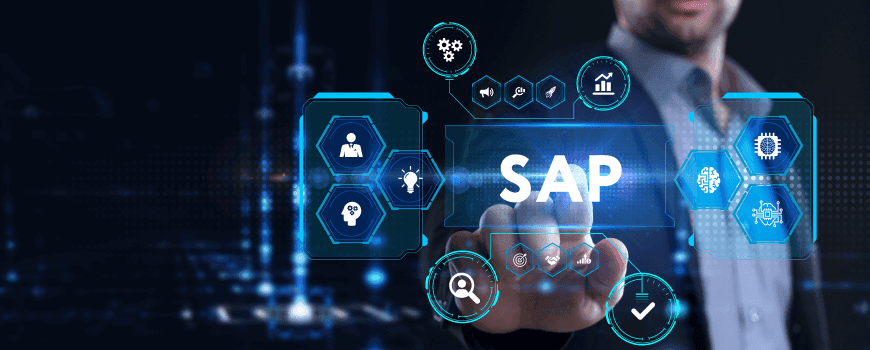Mastering the Transition: What to Expect from Your AMS Provider Post S/4HANA Migration
08 August 2024


Gopal Raman
Vice President- AMSGopal Chittur Raman, Vice President – AMS at Applexus Technologies, brings over 30 years of distinguished experience in Delivery Management. His expertise spans IT operations, Program...
As businesses worldwide undergo digital transformations, SAP S/4HANA is a key enabler, offering the promise of streamlined operations and enhanced performance. For Application Management Services (AMS) providers, this evolution necessitates adaptation and innovation to leverage the full potential of S/4HANA. From a business perspective, what should you expect from your AMS providers to ensure an efficient post-migration performance?
S/4HANA Migration: An Overview
S/4HANA introduces a simplified IT landscape, reducing the complexity traditionally associated with SAP environments. According to SAP, it’s simplified data model can reduce the data footprint by up to 10 times compared to traditional ERP systems, enabling easier maintenance and faster deployment of new functionalities. The HANA database in S/4HANA achieves significantly faster processing speeds compared to traditional disk-based databases by leveraging in-memory computing. Storing data in memory allows HANA to process data up to 10,000 times faster, facilitating real-time data processing and analytics capabilities. This significantly improves decision-making and operational efficiency.
Moreover, S/4HANA's advanced features such as real-time data processing, predictive analytics, and machine learning capabilities allow businesses to innovate and stay competitive. Moving to S/4HANA enhances decision-making, boosts operational efficiency, and increases productivity. It also future-proofs businesses by integrating advanced technologies like AI/ML and IoT.
However, the migration process is complex and requires meticulous planning. A PwC survey found that 67% of companies faced significant challenges during their S/4HANA migration, citing complexity and lack of expertise. Transitioning to S/4HANA requires deep expertise in its architecture and functionalities. Adapting to new processes while ensuring user adoption demands effective change management strategies. This is where Applexus’s CeleRITE, our AI-powered platform for faster S/4HANA migrations can help.
What to Expect from Your AMS Provider After Moving to S/4HANA
The migration from SAP ECC to S/4HANA is a monumental step towards modernizing your business operations, but the journey does not end once the migration is complete. In fact, the post-migration phase is crucial for realizing the full potential of S/4HANA. Immediately after migration, your AMS provider should offer comprehensive around-the-clock support to stabilize the new environment and address any issues promptly. Continuous performance monitoring ensures system stability and efficiency, helping your team adjust to the new system smoothly. Beyond proactive tracking, here are key aspects to expect from your AMS provider after moving to S/4HANA:

Flexible Resourcing
Flexible resourcing post-migration to S/4HANA is crucial for adapting to changing business demands and technological advancements. It involves scalable services that adjust to workload fluctuations, alignment of skill sets to support advanced features, and handling demand fluctuations by ramping up or down from a flexible pool of resources. Employing a Core/Flex model helps efficiently manage resource demand spikes, ensuring continuous improvement and stability in support services.
The Core/Flex Model employs a Core Team and a Flex Team to optimize support. The Core Team, familiar with your business model and technology, ensures knowledge retention, stability, and continuous improvement, facilitating faster issue resolution and steady-state operations management. Complementing this, the Flex Team scales resources up or down as needed to handle demand fluctuations, efficiently managing business volume spikes and quieter periods while maintaining high service levels and optimizing costs.
With a Core/Flex Model, your AMS provider can help you achieve cost optimization by lowering the total cost of ownership (TCO) and avoiding overcommitment of resources during low-demand periods. Additionally, a 3-month rolling forecast model, which considers anticipated business demand, estimated business criticality, and risk management, ensures that resource allocation is planned in advance. This approach aligns resource availability with organizational needs, resulting in a more responsive and cost-effective support strategy.
Continuous improvement
To fully capitalize on S/4HANA’s capabilities, continuous improvement is essential. Expect your AMS provider to conduct regular system and process audits to identify areas for enhancement. Optimization workshops can help explore new features and functionalities that benefit your business. As your AMS provider knows your system well, they will identify the right features and functionalities your system requires.
Moreover, S/4HANA provides immense scope for automation across business processes, configuration management, reporting and user provisioning or access control. Your AMS provider, with deep expertise in S/4HANA, can help identify the most suitable opportunities for automation and execute them. They can also develop extensions and custom applications using SAP Fiori and other tools to meet specific business needs. The integration of automation, AI, and machine learning can significantly enhance workflows and drive innovation.
User adoption & Strategic advisory services
User adoption and proficiency are critical for maximizing the benefits of S/4HANA. Your AMS provider should prioritize continuous training programs to keep users updated on new features and best practices. These programs ensure that your team stays proficient and can effectively utilize the latest capabilities of S/4HANA. Integrating these advancements through workshops and customized training will be easy for your AMS providers as they know your organization’s data landscape and S4/HANA capabilities.
Beyond technical support, your AMS provider should act as a strategic partner, helping you align IT with business goals. This involves developing a roadmap for future upgrades, integrations, and innovations. Strategic advisory services can guide you in leveraging new technologies such as AI, machine learning, and IoT within your S/4HANA ecosystem.
Security & Performance reviews
Ensuring your S/4HANA system remains secure and compliant is crucial. Your AMS provider should conduct regular security audits. They must also ensure your system complies with relevant regulations and standards, implementing robust data protection measures to safeguard sensitive information. This proactive approach to security helps mitigate risks and ensures your business remains protected in a dynamic digital landscape.
Regular performance reviews are essential to ensure your system continues to meet business needs and expectations. Monitoring key performance indicators (KPIs) helps assess system health and user satisfaction. Establishing feedback loops with end-users allows for continuous improvement, incorporating valuable insights into system optimization efforts. Benchmarking against industry standards identifies opportunities for further enhancement, ensuring your S/4HANA environment remains competitive and efficient.
Efficiently leveraging both XDs and XLAs
Post-migrating to SAP S/4HANA, prioritizing change management and user experience is critical. Your AMS provider should adopt a flexible approach by integrating both Experience Data (XDs) and Service Level Agreements (SLAs) to ensure better user experience and operational stability. While XDs focus on the entire user journey—including ease of use, system responsiveness, and user feedback—SLAs provide a framework for measuring and managing service performance and reliability. This dual approach enhances overall satisfaction and ensures that the S/4HANA system supports strategic business initiatives, driving greater value for your organization.
By aligning IT services with business goals, XDs and SLAs facilitate continuous improvement, regularly assessing user satisfaction and making necessary adjustments to meet evolving business requirements. Incorporating a business scorecard helps track and measure the impact of these efforts on key business metrics, ensuring that your S/4HANA system meets both technical benchmarks and delivers a superior user experience. This proactive and flexible approach promotes better collaboration between IT and business units, focusing on shared outcomes and improving overall efficiency. Emphasizing both XDs and SLAs, rather than sticking strictly to traditional SLAs alone, is a strategic move that ensures post-migration success and long-term benefits for your SAP S/4HANA implementation.
Conclusion
Post-migration, the right AMS provider can make a significant difference in how effectively your business leverages S/4HANA’s capabilities. From proactive monitoring and continuous optimization to strategic advisory and comprehensive user support, your AMS partner should be committed and adaptable to your long-term success.
By partnering with an AMS provider that delivers on these fronts, you can ensure your S/4HANA environment remains robust, stable, efficient, and aligned with your business goals, paving the way for sustained growth and innovation.








